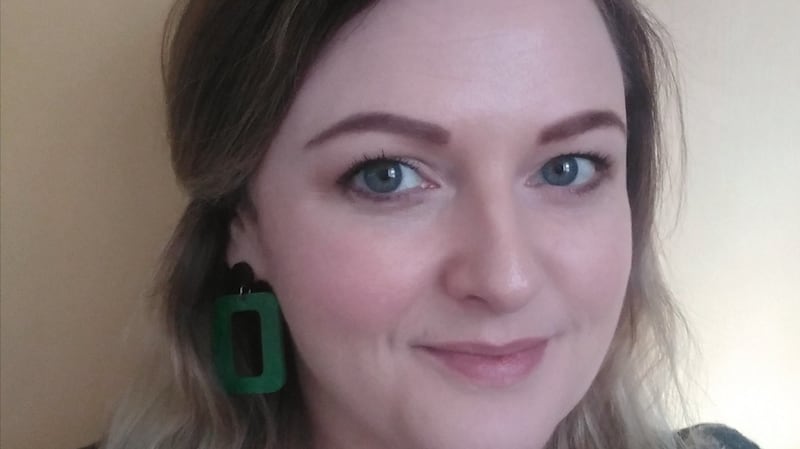Last year was Bliain na Gaeilge when the Irish language was celebrated across the world. More and more people are working in the first language of the State and it is no surprise that the surge in jobs which require the language has led to an increase in the number of courses available as Gaeilge.
Some areas have seen a particularly large growth, including TV and radio production, the IT sector, Irish language software, jobs abroad (such as in teaching) and various public sector and political posts.
There are also opportunities for fluent Irish speakers in government departments, the arts and culture sector, translation, and in Irish language organisations such as Conradh na Gaeilge.
One of the professions where graduates with Irish are highly sought after is teaching. The growth of the grass-roots Gaelscoil movement means the demand for teachers continues to increase at primary and secondary level. There has also never been a better time to become an Irish language school teacher and research shows Irish is the subject where teacher shortages are most acute.
In a poll of principals and deputy principals at 120 schools, carried out by the Teachers’ Union of Ireland (TUI) in April, it was found that two thirds of respondents had been in a situation where there were no applications for a vacancy in the previous six months. Just under half said their school still had unfilled teaching vacancies.
In another poll conducted by the TUI late last year of 150 principals and deputy principals, two thirds said some subjects were being taught by teachers not qualified in the area they were teaching.

‘100 per cent employment’
Changing demographics mean an additional 2,000 second-level teachers will be needed in the next six years; in particular, the system is lacking newly qualified Irish teachers and those who can teach in Irish-medium schools.
"There's a huge amount of positives from doing teacher training through Irish because there is 100 per cent employment," says Dr Brendan MacMahon of the School of Education in NUI Galway where the Irish-medium post-primary initial teacher education Professional Masters of Education (Máistir Gairmiúil san Oideachas) programme is taught.
MacMahon says while supply needs to be increased, standards in Irish need to be maintained. He points to a lack of standardisation across colleges when it comes to grading degrees for those who study Irish, and says it is leading to mixed standards from undergraduates looking to do the teacher-training degree.
“There was a time when we used to give an oral and written exam for getting into the course but standards have fallen and there are graduates with Irish as a degree subject who are not very confident in their own language ability. You have to distinguish between spoken and written Irish – students are having difficulties with written Irish so that is where we provide the bulk of support when they get on to the course,” says MacMahon.
So why is there such a lack of confidence? "Obviously when you are interviewing applicants for the programme, you know that the standard of graduates with Irish is different depending on the university. Some come in much more capable and confident than others. The same yardstick to measure the strength of their Irish degree is not being used across the board," says Mac Mahon.
“A B2 is the standard that degrees in Irish are expected to reach on the European framework when they exit their degree programme. Unless you apply the same framework across every course we cannot distinguish a B1 and B2 level of Irish from the students applying,” says Mac Mahon.
Mac Mahon says he is not looking to point fingers, but the lack of homogeneity across colleges and universities needs to be addressed. "All the colleges, the Higher Education Authority, the NCCA have a role to play in ensuring that a common assessment is applied to people leaving their course."
Acute teacher shortage
Mac Mahon says the teaching shortage is so acute, principals are head hunting students in the course and there is full employment afterwards for those who do their teaching degree through Irish.
“There is a fall in the number of applications for second-level teacher training because of the investment of time and money. It takes up to six years to qualify, by the time they do their undergrad and teacher training, and they are not paid for placement,” he says.
“Also – if you are a teacher who has Irish in your degree and you’re looking at the gairm [profession] which is through Irish, you may weigh up the amount of written Irish required, so if they are under-confident in their ability, they are being strategic and doing teacher training through English,” he says.
MacMahon says students who have a good level of Irish should not be deterred from doing their teaching degree through Irish. “If I was a young arts graduate and I was not 100 per cent confident in my ability in writing Irish, it is important to note that help is there. The written side is not daunting, there is support along the way,” he says.
He says there are a range of practical supports for those who are on the course.: “Students who want to train through Irish should be incentivised to do so. We have bursary scheme for a reduction in fees if they can do this course with the subjects that are in demand and it works.”
“We help to sort out preferential rates for hostels in Galway for students who don’t want to rent, we changed the timetable from Monday to Thursday for students who need to work at the weekend or don’t want to rent an apartment for the year. Educationally, we support students by using iPads to make remote visits to the classroom. They can broadcast the class to the office so we can help them – technology helps to support students in a practical way,” he says.
Population trends
According to Cormac McCashin of Foras Pátrúnachta, 4.7 per cent of schools in the State are Gaelscoileanna, and the generation who grew up studying in them are now beginning to go into teaching.
“Children who attended Gaelscoileanna are coming through the system now, and want to come back in teach in our schools, and that is a positive trend,” he says.
He notes the population trends point towards a need for more Irish second-level teachers.
“The primary level population has peaked in this current school year, and it is forecast to fall in the years going forward. As a result of that – not taking into account the pupil-teacher ratio – fewer teachers will be needed because there will be less pupils, so the current pressure will start to alleviate. The issue is more acute at second level as that age group are coming through now,”says McCashin.
McCashin says some drastic measures may need to be taken to address the current shortage: “One thing we need to look at at second level – the teacher could be full time or part time; schools are not sharing the teacher, or viewing the teacher as a resource. Principals naturally enough want to keep teachers in those subjects they have difficulties recruiting for, but a more sensible approach may be to use a group of 10 teachers for whatever number of schools in a particular area,” he says.
“It’s a different culture but it would be a better use of resources. Principals look out for their own school, and that is understandable, but there are teachers teaching their weaker subjects to make up full-time hours.”
Teaching aside, McCashin notes that with almost 400 Irish-medium schools in the State, people with degrees through Irish should know their skillset is in high demand.
“One of the biggest employers for those who have Irish is the media – there are six tv stations and several radio stations. It is not just the face you see on the screen – you need set designers, make-up people and office people,” he says.
“There is huge demand for people who can do day-to-day jobs through Irish. People think of schools as a teacher and a principal. However, with the number of Irish-medium schools, we also need accountants, health-and-safety staff, psychologists and so forth who can provide their services for the school through Irish,” he says.
Courses
The Department of Education said it is taking steps to improve teacher supply. Colleges and universities are providing new post-primary initial teacher education undergraduate programmes in 2019 in priority subject areas, including Irish.
These programmes include 60 places at Dublin City University for a Bachelor of Education (B Ed) degree in Gaeilge, French, German or Spanish, and 25 places on a Bachelor of Arts (BA) degree at Mary Immaculate College in Education, Maths and Gaeilge.
As part of the Policy on Gaeltacht Education 2017-2022, the Department has also introduced a number of measures which will support the supply of teachers to Irish-medium schools.
The number of places available on the existing Irish-medium post-primary initial teacher education Professional Masters of Education (Máistir Gairmiúil san Oideachas) programme in NUI Galway has been increased. There will be 35 places available on this programme from 2019 onwards, an increase of 46 per cent since 2017.
Marino Institute of Education will deliver a new four-year Irish-medium B Ed for primary teachers commencing in 2019 with 30 places available.
Mary Immaculate College are providing an Irish-medium Masters in Education (M Ed) for primary and post-primary teachers, including principals, which commenced in September 2018 with 30 places available.
Students on DCU’s BA in Gnó agus Gaeilge study business, management and information technology, taught through the Irish language. The programme is linked with national and international employers who favour graduates with business and IT skills and mixes academic and practical education. Students also have the opportunity to gain real-life experience with an optional one-year INTRA work placement before they enter their final year. Graduates find work in the public and private sectors – in English and Irish – in areas such as business and project management, finance and Computing, business software design, teaching, research, the civil service, and the media.
One of the best-known postgraduate courses through Irish at DCU is the MSc in Gnó agus i dTeicneolaíocht an Eolais. Ciarán Mac Murchaidh said the course attracts people who are already working, many as teachers and those working in the Irish voluntary sector.
“The reason it attracts that depth of candidates is the variety of modules that are taught, from project management to leadership. The leadership module is attractive to teachers, for instance, who want to progress to principal or deputy principal,” says Mac Murchaidh.
The Gaeilge agus Iriseoireacht [journalism] course is also popular among those looking to work in the Irish media. "It's a very hands-on course; bring in experts from TG4 and people who work in Radió na Gaeltachta as they have up-to-the minute experience of the sector and have working knowledge to impart to students," he says.
Mac Murchaidh says many of the courses have an INTRA placement where students received marks towards their degree for doing a placement in a relevant company,
"Fiontar has long-established links various Irish-medium companies and companies where students can put their Gaeilge to good use. For example, one of our students was interested in sport and Gaelic games so he got to do his placement in Croke Park, " he said.
Graduates’ experience

Róisín Scanlon, Dublin
“I qualified as a Gaeilge and Music teacher last September and I’m currently teaching Gaeilge in a great school in west Dublin. As a child I always knew I wanted to be a teacher, I just didn’t know what I wanted to teach.
“I adored Gaeilge in school, it was my favourite subject. I was lucky enough to have the same teacher from second to sixth year as he had such a love for Gaeilge as a language and really taught us that it was more than just a subject.
“When I decided I wanted to teach Gaeilge I really wanted to create the classroom and environment that he created. I hope I’m able to ignite in other students what he ignited in me. I’ve always been of the opinion that your own teachers are all the motivation and inspiration you need and looking back at both my Irish and Music teachers they were so passionate it was so hard not to be passionate with them.
"When I left school I went to Maynooth University and in first year studied Nua-Ghaeilge, music, and history. In second year when I had to choose just two to continue with there was never really a doubt in my mind, I was definitely choosing Irish. Despite hearing about loads of other career options in college I never considered them. My heart had been set on teaching since I was so young, I knew that's what I wanted.
“After my degree I stayed at Maynooth for my postgrad. There wasn’t a huge number of my peers that continued from the undergrad to the Post-Primary PME [Professional Master of Education]. A lot of students that studied Gaeilge with me in college went on to do the PME in Primary Education instead.
“Finding a job after I qualified was relatively easy. Any job I applied for I got an interview, and I accepted the first job I was offered. There has been such a lack of Gaeilge teachers in recent years and there is such a huge pressure on schools to recruit. As an Irish teacher it’s great that we know there are jobs there – some other subjects are hugely over populated and amazing teachers are left without work, there’s a huge imbalance.
“I love my job. It’s so tough and challenging but also really rewarding. I think it’s important for students to have a positive connection with Gaeilge so I always try to build good relationships with students. I’ve found that if students engage positively with me they’ll engage positively with the language. It can be very difficult at times when students have a negative attitude towards Gaeilge and it takes a lot of time to explain how important it is in terms of culture and heritage, and then the benefits of language learning as a whole.
“ It really is imperative that we keep Gaeilge in schools and I think majority would agree that it’s so important.”

Nicola Brennan, Kilkenny
"I always loved Irish. My primary school in Freshford, Kilkenny, was not a Gaelscoil, but the teachers had a great love for Irish and the standard of Irish among the teachers there was very high, which I believe is key. It can be very hard to get students to feel positive towards Irish in secondary school if their experience of it in primary was negative.
“As for actually wanting to be an Irish teacher, I would have been motivated by my secondary school Irish teacher, Micheál Ó Caoimh, in the Presentation in Kilkenny – not that he motivated me towards teaching specifically, but just to use Irish after my Leaving Certificate. However, I had already decided that I wanted to be a secondary school teacher, and so Irish teaching seemed a logical step.
“My undergrad was Arts at UCC. It was the most direct route to qualifying as an Irish teacher. I did a Joint Honours BA with Geography, my other subject. I honestly didn’t really consider any other profession. I enjoyed the sciences in school, so I had a brief notion of studying Optometry – but I knew really that I wanted to do the BA.
“I did my postgrad – then called the ‘HDip’ – in UCC as well. Only my Irish lectures were specifically through Irish. I had placement every morning, teaching usually two classes and going to lectures in the afternoon. I loved the school, it was extremely supportive and I had brilliant fellow students with me.”
“Thankfully, I have always been able to find work, although I didn’t become permanent until after 4 years of teaching, so it can be a worrying time at the end of each academic year, wondering if you will be asked to remain on for the following year. I do know that many schools struggle to get Irish teachers, having spoken to principals from other schools.
“I enjoy pitching the classes to their ability from basic conversations to more advanced topics like politics and society by the time they get to Leaving Cert. It’s fantastic to see that progression happen organically rather than through the regurgitation of notes. The best way to teach or learn a language is just speak it, so I often think language teachers probably get to know their students better than most other teachers through all of the conversations in class, which can be very enjoyable and rewarding.
“As for it remaining compulsory, I struggle with my opinion on this. On one hand, making something compulsory is often a sure-fire way to turn people off it. On the other hand, if Irish was a choice, it could do real damage to the language. The interesting thing is that most surveys/polls done show that the majority of people wish they were more proficient at speaking Irish, so I do think that the will is there, but that perhaps the way needs to change. It’s certainly improved, given that 40 per cent of the Leaving Cert is based on the Oral exam. However, with not enough emphasis on oral work for junior cycle and still a lot of literature to cover, it can be frustrating. Us Irish teachers are always hit with cries of ‘It’s how it’s taught’, but we can often be just as frustrated with the curriculum. Overall, I would like to see it remain compulsory, but with a few changes to the current system.”












